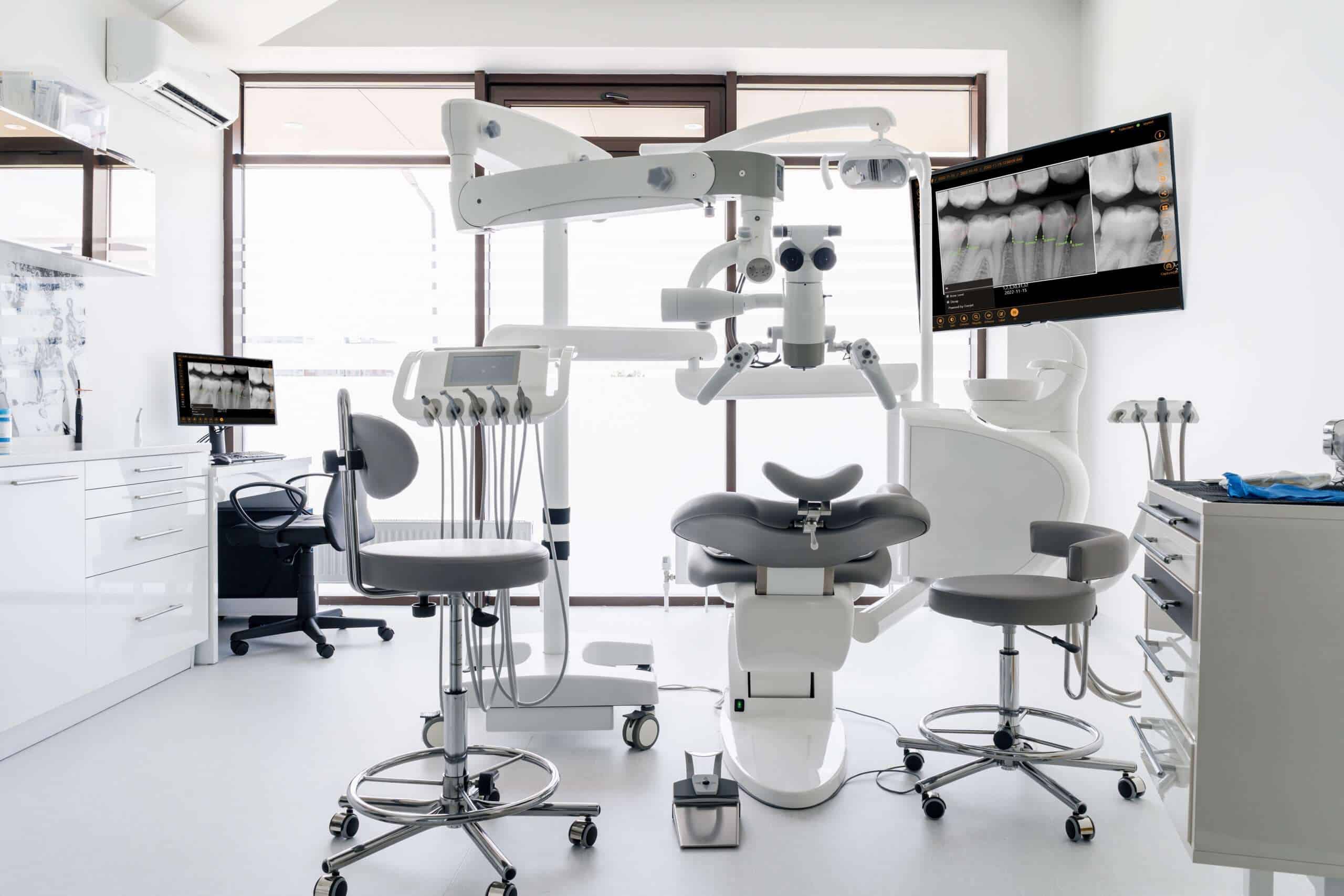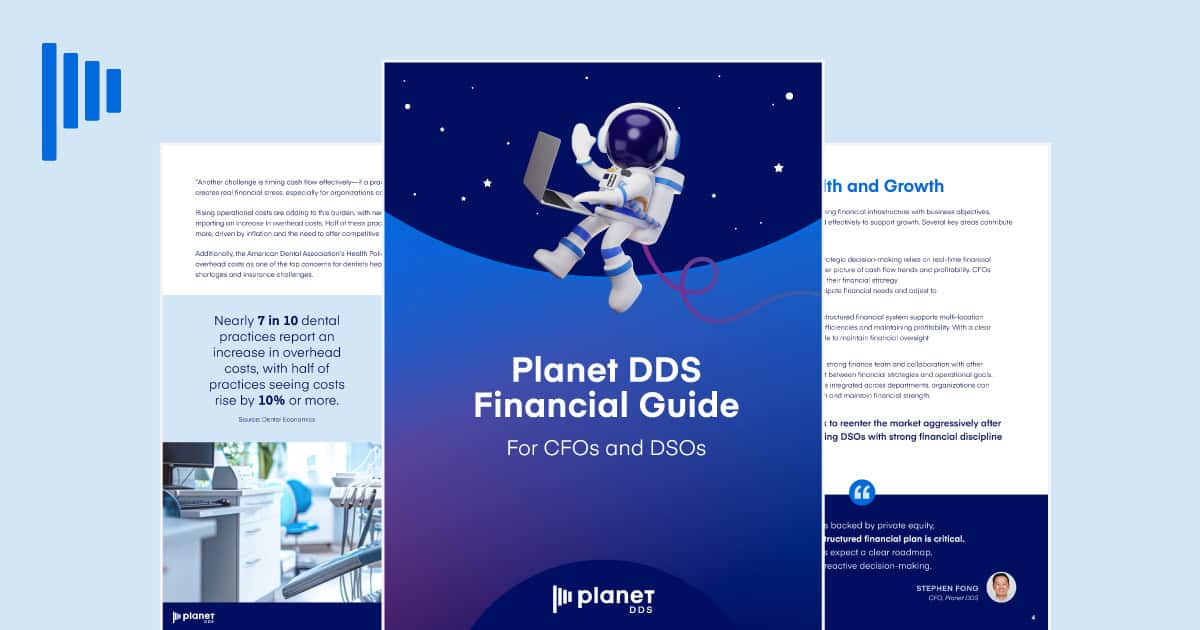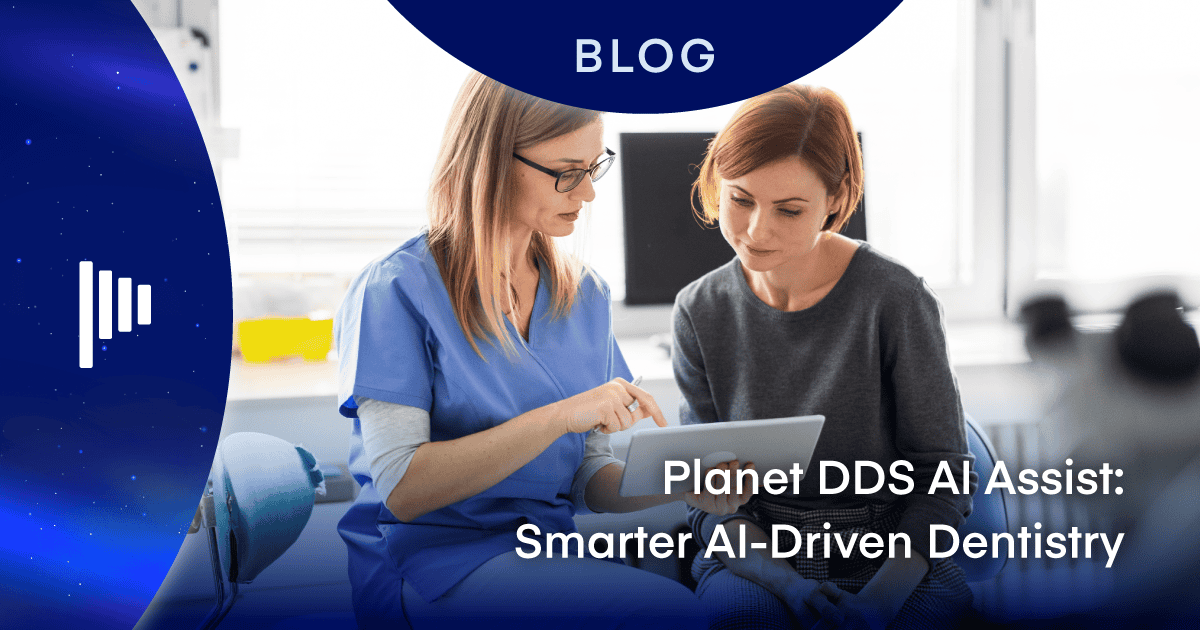Transforming Dental Practice: A Deeper Look into the Integration of AI in Dental Imaging

Guest Blog by: Dr. Seth Gibree, Senior Director of Clinical Advocacy of Heartland Dental, Christopher J. Hedinger, Strategic Accounts Director, Imaging for Planet DDS, and Sayeed Yaqubi, Product Manager for Planet DDS
The pervasiveness of artificial intelligence has profoundly changed our daily lives. AI’s ubiquitous influence is unmistakable, from smart assistants in homes to personalized recommendations online to tools like ChatGPT. It’s no longer futuristic — it is the present, silently powering our connected world with increasing sophistication. This invisible assistant, silently revolutionizing our everyday routines, does not stop at our personal lives. It also extends its vast influence into fields including healthcare, science, the economy, and more specifically, AI in dental imaging.
Artificial Intelligence has increasingly become a vital tool within the dental industry. In particular, one of the leading use cases is in dental imaging, supporting patient education, diagnostic accuracy, consistency among providers, case acceptance, and workflow efficiencies.
According to a recent survey, 45.4% of dental professionals rated their knowledge of AI as poor and 37.1% as average, highlighting the immense growth potential of AI in dentistry.1
Delving into AI’s Dental Evolution
AI is a term used to describe when a machine mimics human cognitive functions like problem-solving and learning. The potency of AI lies in its capacity to gather, process, and learn from data at a rate that is incomparable to human capabilities. It can sift through vast volumes of patient data, such as X-rays, treatment plans, and clinical notes, free from human error, fatigue, and bias, thus, enhancing efficiency and accuracy.
The first FDA-approved AI algorithm debuted in 1995, marking the beginning of AI’s journey in healthcare. Since then, there have been significant strides in AI advancements. The FDA cleared over 300 AI and machine learning (ML) applications between 2019 and 2022, with 75% of them focused on medical imaging. 2 AI in dental tools do not aim to usurp dentists but instead support them, helping them to provide better patient care.
A Glimpse into AI’s Dental Applications
AI finds its applications in diverse areas of dentistry, ranging from early disease identification and diagnosis to treatment planning and surgical guidance. AI in dental imaging offers multiple advantages, such as bolstering training for new dentists, reducing false negatives and positives, providing patient education opportunities, and detecting diseases early, thus promoting preventative therapy.
AI has the potential to enhance dental care in both dental service organizations (DSOs) and private practices. DSOs can use AI to streamline efficiencies in care, optimize performance with visualization tools, facilitate practice affiliation mergers, and monitor outcomes. Similarly, private practices can harness AI’s capabilities to bring about significant improvements in their services.
By combining the vast knowledge base of AI with the invaluable experience and intuition of dental practitioners, impressive results can be achieved. This fusion of human and artificial intelligence can improve dental outcomes, streamline decision-making, and enhance patient satisfaction.
Why Adopt AI in Dental Imaging
In the dynamic and rapidly advancing field of dentistry, AI imaging stands as a harbinger of unprecedented progress, offering a wealth of benefits across various facets of the profession. One of the most significant advantages is enhanced diagnostic accuracy. With AI, dental practitioners can promptly identify areas requiring attention and in turn, fine-tune sensitivity and specificity on radiographs. This technological intervention supports more accurate and consistent diagnosis, supporting general industry standard of care and best practices across offices.
Beyond diagnostics, AI can offer a whole-picture insight into patient cases. Thanks to its remarkable pattern detection abilities, AI ensures accurate and comprehensive assessments of dental images, which ultimately leads to better patient outcomes.
Another significant benefit of AI in dentistry is the consistency it brings across clinicians and treatment plans. AI provides standardized insights, assisting dentists in making data-driven decisions. This uniformity can enhance patient care within and across multiple offices by ensuring everyone receives the same high-quality treatment, regardless of whether the patient flow that day has been slow, regular, or hectic.
Furthermore, AI supports a higher rate of case acceptance. By visually highlighting problem areas, AI-analyzed images help patients better understand their X-rays, providing chair-side educational opportunities for dentists. This clearer insight into their dental health often leads to patients more readily accepting recommended treatment plans.
Finally, integrating AI can lead to increased efficiency in dental practices. AI systems can take over time-consuming administrative tasks, allowing clinicians to concentrate on delivering care. This enhanced workflow efficiency results in reduced idle time and significantly improves the delivery of care. AI’s potential in optimizing the dental practice operations and the care delivery process is remarkable, setting a new standard for the future of dentistry.
The AI Road Ahead
AI’s impact on dentistry is undeniable. With its wide-ranging benefits, AI integration promises a transformative future for the dental industry. However, it’s essential to approach AI implementation with a clear understanding of its capabilities and limitations. While AI can augment clinical expertise, it cannot replace it.
Ultimately, AI remains an incredibly potent tool that dental leaders can leverage to propel their practices to greater heights. As the dental industry continues to explore and embrace AI, we are indeed on the brink of a new era of dentistry, one where technology and human expertise synergize to deliver unparalleled care.
Download our full ebook today to learn more about how AI is revolutionizing dentistry: The AI Revolution in Dentistry, Unlocking Opportunities for Success and Growth: A Comprehensive Guide to AI Imaging for DSOs and Multi-Location Dental Practices by Dr. Seth Gibree, Christopher J. Hedinger, and Sayeed Yaqubi
References
- Eschert, T., Schwendicke, F., Krois, J., Bohner, J., Vinayahaligam, S., and Henisch, M. (2022). A Survey on the Use of Artificial Intelligence by Clinicians in Dentistry and Oral and Maxillofacial Surgery. National Library of Medicine, National Center of Biotechnology Information, https://www.ncbi.nlm.nih.gov/pmc/articles/PMC9412897/
- US Food and Drug Administration. (2022). Artificial Intelligence and Machine Learning (AI/ML)-Enabled Medical Devices. https://www.fda.gov/medical-devices/software-medical-device-samd/artificial-intelligence-and-machine-learning-aiml-enabled-medical-devices



